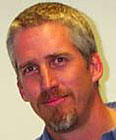 |
|
|
| Author |
Message |
Joe_Shmoe
Guest

|
 Posted:
Fri Jun 04, 2004 8:50 pm Posted:
Fri Jun 04, 2004 8:50 pm |
  |
what are biogeochemical cycles? what do they have to do with anything in real life? where are they?
Keepin' It Real, 
Joe Shmoe |
|
|
|
 |
Max_Holmes

Joined: 27 Mar 2004
Posts: 43

|
 Posted:
Sat Jun 05, 2004 7:14 pm Posted:
Sat Jun 05, 2004 7:14 pm |
  |
Hi Joe Shmoe!
"Biogeochemical Cycles" refers to the transport and transformations of chemicals in the environment. The word is made up of three parts: "bio" relates to living plants and animals, "geo" relates to the earth - rocks, soil, water, etc, and you can probably guess what "chemical" relates to. One biogeochemical cycle that I've spent a lot of time studying is the nitrogen cycle. How nitrogen (in the form of nitrate or ammonium or organic nitrogen) moves through a watershed, how nitrate and ammonium are taken up by plants (on land or in the water), how the nitrogen in plants (like phytoplankon) are transfered to animals (like zooplankton) when the animals eat the plants, and how the nitrogen gets returned to the environment as plant litter and animal water. People also study the biogeochemical cycles of other elements such as carbon and phosphorus and many others, and it is also very interesting to think about how these different biogeochemical cycles interact. On the Lena River and the other large arctic rivers that we're studying, we're measuring lots of different chemical compounds so that we can learn about lots of different biogeochemical cycles.
So yes, biogeochemical cycles have everything to do with "real life". As you eat your lunch today, think about how the nitrogen and carbon and phosphorus got into whatever you're eating. If you're eating a hamburger, the nitrogen in the beef came from the nitrogen in the food that the cow ate (mainly plants grown for cow food), the nitrogen in the cow food plants came largely from chemical fertilizers that the farmer put onto his/her fields (some of which ended up in the plants and some of which ended up in rivers, lakes, and groundwater), and the nitrogen in the fertilizer probably came from "industrial nitrogen fixation", which is an industrial process that takes nitrogen from the air and makes it into a form that plants can use. Industrial nitrogen fixation is making MUCH more nitrogen available to plants on a GLOBAL SCALE, and much of this nitrogen later "escapes" into the environment where it can cause big problems in terrestrial (earth), aquatic, and marine ecosystems. That's why we should all try to go easy on the amount of fertilizer that we dump on our lawns and gardens - much of it doesn't stay on our lawns, but instead ends up running off into a nearby lake or stream and contributes to their eutrophication (making them green and nasty).
Hangin' in Siberia,
Max |
|
|
    |
 |
|
|
|
View next topic
View previous topic
You cannot post new topics in this forum
You cannot reply to topics in this forum
You cannot edit your posts in this forum
You cannot delete your posts in this forum
You cannot vote in polls in this forum
You cannot attach files in this forum
You can download files in this forum
|
Powered by phpBB 2.0.11
© 2001, 2002 phpBB Group :: FI Theme ::
All times are GMT
| |
